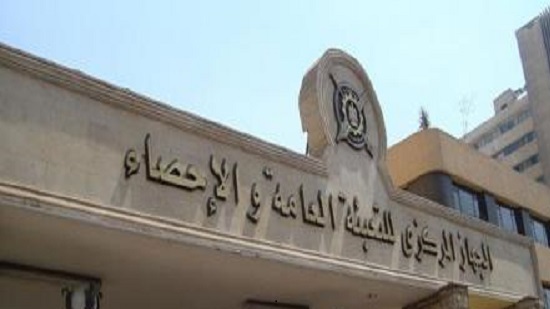The wealthiest 10 percent of citizens in Egypt are responsible for 25 percent of the total expenditure of Egyptians, while the poorest 10 percent are responsible for only 4 percent of the total expenditure, reflecting the huge gap in living standards, according to the Central Agency for Public Mobilisation and Statistics (CAPMAS).
These figures were part of the 2015 (2013/2014) Household Income, Expenditure and Consumption Survey (HIECS) – issued every two years – which was presented at a CAMPAS press conference Tuesday.
The socioeconomic gap between the country’s citizens is reflected in the number of Egyptians who benefit from social insurance: 81.8 percent of Egyptians living under the poverty line are not subscribed or do not benefit from social insurance, says Heba Ellaithy, statistics professor at the Political Sciences and Economics Faculty at Cairo University.
This comes as 77.4 percent of the 10 percent who spend the most in Egypt benefit from smart card subsidies, adds Ellaithy.
The subsidies are mostly used for food commodities, especially oil, rice and sugar, with, for example, 70 percent of oil consumption coming from the smart card subsidies.
Statistics and figures issued by CAPMAS are used by the state as a guide in implementing official policies, said social solidarity minister Ghada Waly, adding that, for example, knowing which areas are the poorest enables the government to prioritise development efforts.
The survey relied on a sample of around 24,000 people – around 45 percent in urban areas – who researchers visited four times in the winter and summer to calculate the average consumption.
How much Egyptians spend vs how much they earn
One family spends on average around EGP 36,700 per year, and has an average income of about EGP 44,200, which means Egyptians spend 83 percent of their income.
Expenditure is worth an estimated average of EGP 42,400 in urban areas and EGP 31,800 in rural areas annually per family, according to the survey, which means urban residents spend 25 percent more than rural residents.
The numbers do not strictly reflect the purchasing power of citizens, but they stem from price differences and disparities in income between rural and urban areas, the latter being more expensive.
Income is estimated at a yearly average of EGP 51,200 in urban areas versus EGP 38,300 in rural areas per family, which correlates to the 25 percent difference in expenditure.
Where do Egyptians spend their money?
An average of 34.4 percent of yearly expenditure per person in Egypt goes to food and beverages, down from 37.6 percent the previous year, according to the survey.
The numbers are nominal, which means they do not take into account inflation, says CAPMAS president Abo Bakr El-Guindy, who adds that an increase in spending on food indicates an improved standard of living.
However, Egyptians living under the poverty line represent 27.8 percent of the population, an increase from 26.3 percent in 2012/2013, up by around 10 percentage points from 1999/2000 when 16.7 percent of Egyptians lived under the poverty line, says statistics professor Ellaithy in a presentation about social inequality.
Household expenditures come in second after food spending, taking up 17.5 percent of overall expenditure per person, down from 18.1 percent in 2012/2013.
Ten percent of expenditure is spent on health services, an increase from 9.2 percent the previous year, and 6.3 percent on transportation compared to 5.2 percent the previous year.
Education falls in a lower category, representing only 4.8 percent of Egyptians’ expenses, even less than spending on clothing, which takes up 5.6 percent, and a little higher than the spending on smoking, which is estimated at 4.7 percent.
Other expenses are furniture and maintenance (4.1 percent), hotels and restaurants (4 percent), various goods and services (3.9 percent), communications (2.5 percent) and culture and entertainment (2.1 percent).




